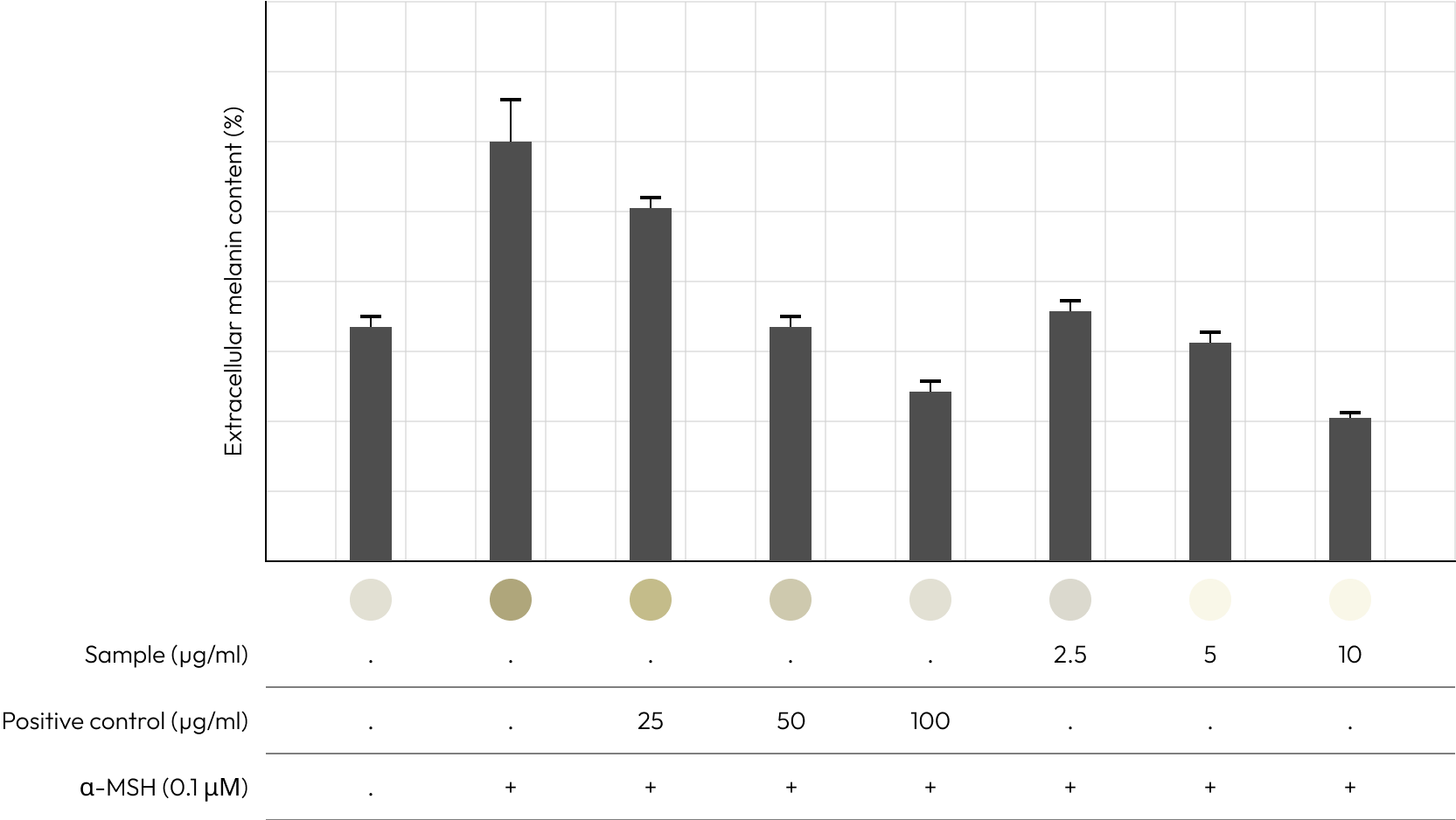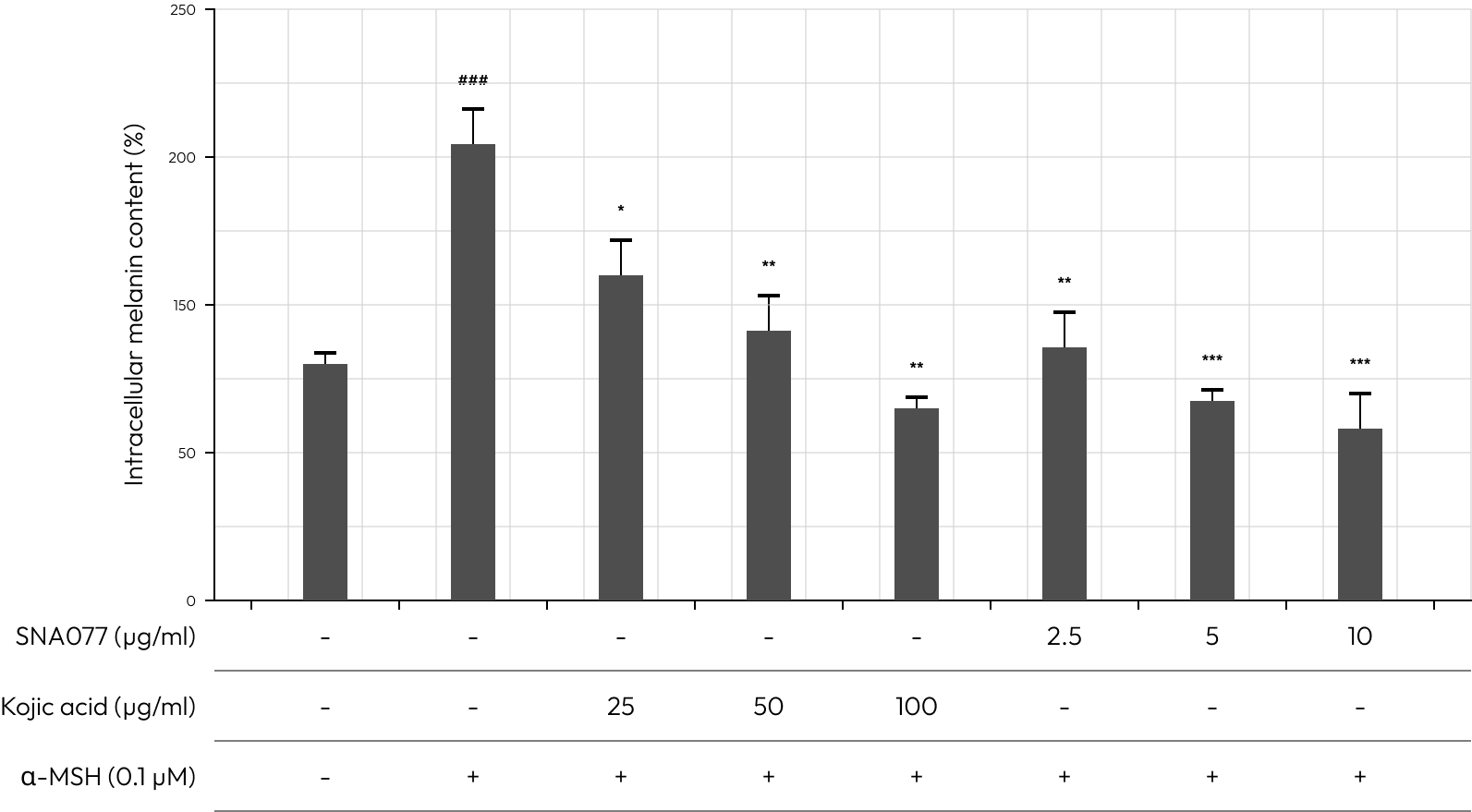Step 1_1: After culturing the cell line, it undergoes a stabilization process.
Step 1_2: Identify the concentration range for sample toxicity and establish the test concentration.
Step 2_1: Stabilize the cells by culturing them in a 48-well plate for approximately 1 day.
Step 2_2: After verifying the condition of the stabilized cells, treat them with the melanin production-stimulating hormone (a-MSH), either alone or simultaneously with the sample.
Step 2_3: Assess the whitening efficacy by comparing the amount of melanin production in the group treated with a-MSH alone and the group treated simultaneously with the sample
Step 3_1: Confirmation through repeated experiments, spanning from the initial cell seeding to the formation of melanin.
Step 3_2: Arranging raw data and generating quantitative or morphology data.
1. Microscopy data (cell morphology)
2. Extracellular melanin content (%) data
3. Intracellualr melanin content (%) data
1. General screening stimulus: a-MSH (B16 cell line)
2. In a light-induced melanin production model, the stimulus source can be replaceable with UVB
3. Efficacy screening is feasible without irritants when utilizing cell lines other than the B16 cell line (high reproducibility).
1. Murine melanoma cell line : B16F10 , Melan-A
2. Human melanoma cell lin : MNT-1
3. Primary human melanocytes





